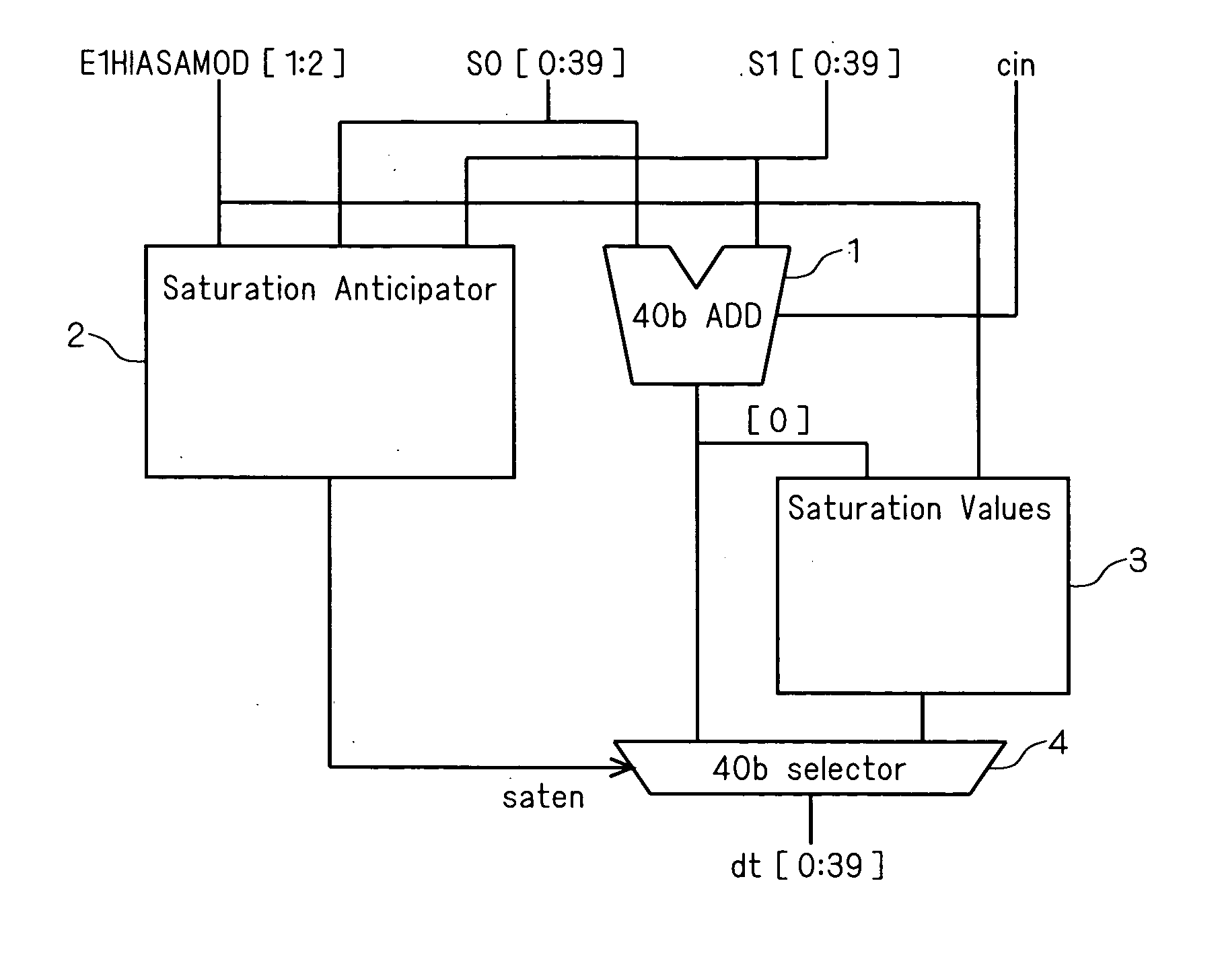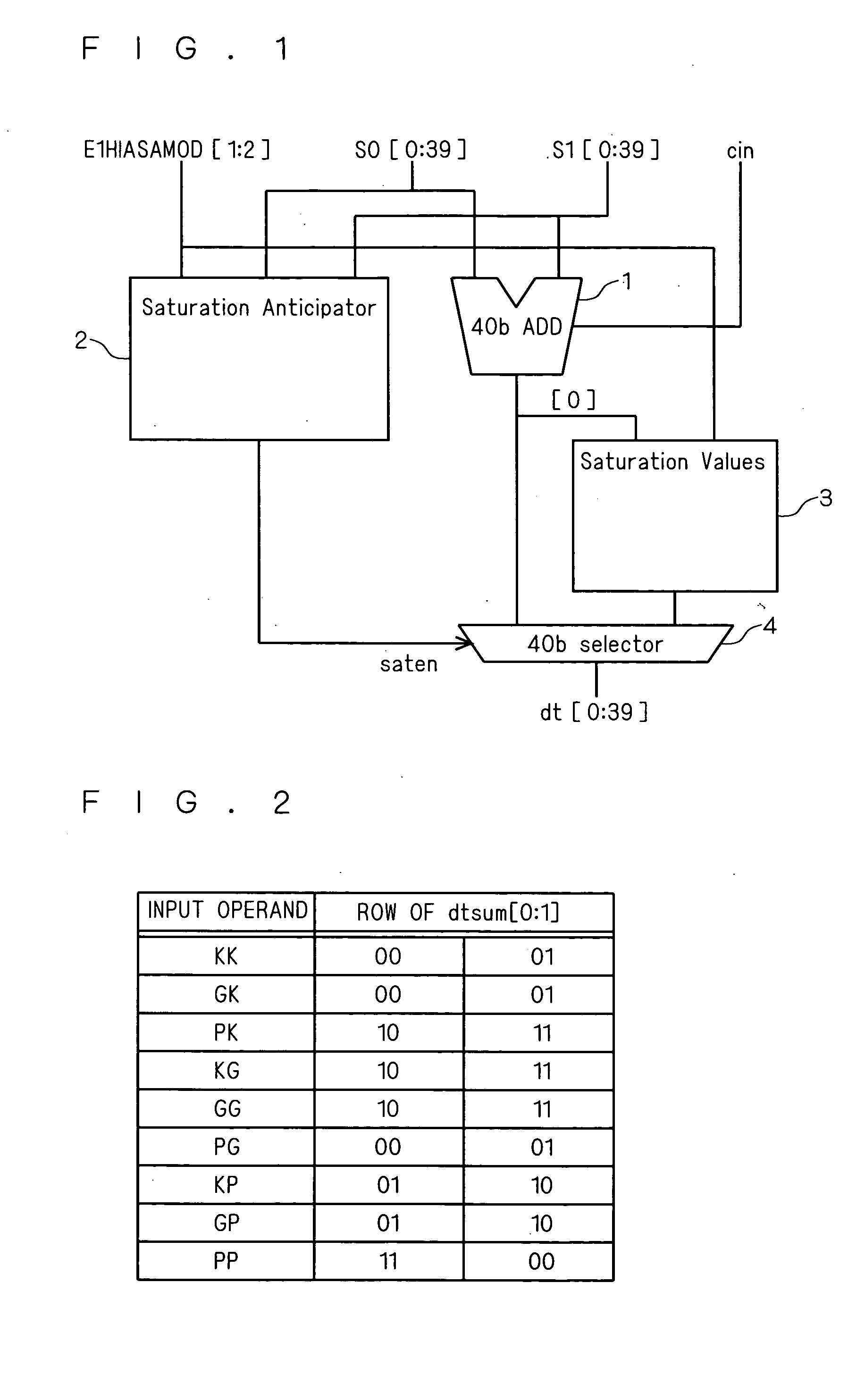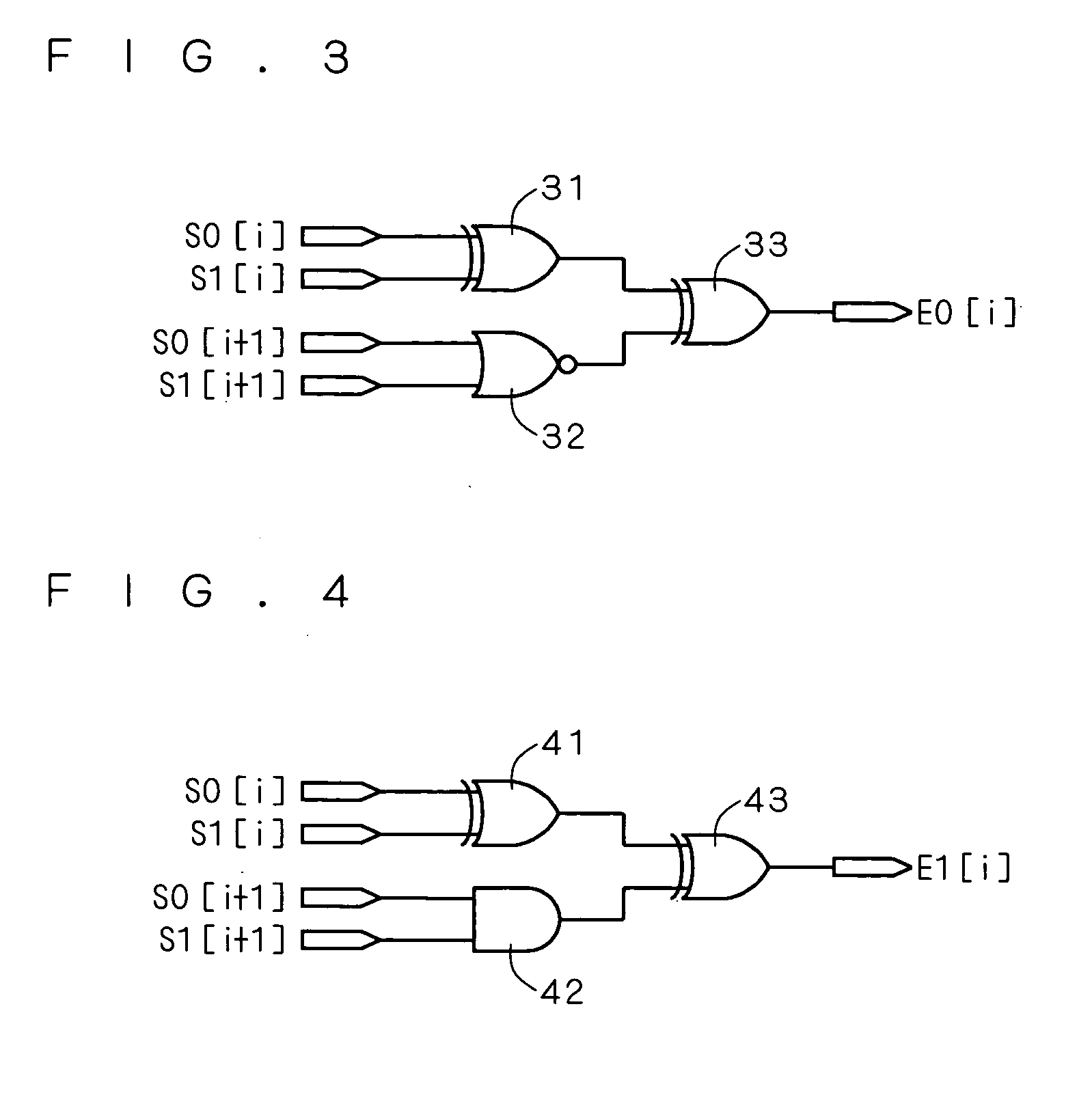Arithmetic unit
- Summary
- Abstract
- Description
- Claims
- Application Information
AI Technical Summary
Benefits of technology
Problems solved by technology
Method used
Image
Examples
first embodiment
[0035]FIG. 1 is a block diagram showing an arithmetic unit according to this embodiment. The arithmetic unit shown in FIG. 1 has an adder 1, serving as an arithmetic processing section, that performs an add operation of input operands S0[0:39] and S1[0:39] and outputs the arithmetic result dtsum[0:39] and a saturation anticipator 2 that anticipates whether the arithmetic result of the adder 1 is within the representation range of a predetermined bit length (e.g., 16 bit length) or not from the input operands S0[0:39], S1[0:39] and E1HIASAMOD [1:2] and outputs a saturation anticipating signal (saten), wherein the adder 1 serving as an arithmetic processing section and the saturation anticipator 2 are configured to operate in parallel. It should be noted that E1HIASAMOD [1:2] is a signal for setting whether the saturation process including the saturation anticipator 2 is enabled or disabled.
[0036] Further, the arithmetic unit shown in FIG. 1 is provided with a saturation values gener...
second embodiment
[0066] As explained in the first embodiment, the saturation anticipator 2 shown in FIG. 5 utilizes the dtsum[8] and dtsum[32] that are the outputs from the adder 1. However, if the saturation anticipator 2 has to perform plural processes after obtaining the arithmetic result of the dtsum[8] and dtsum[32] from the adder 1, the process at the saturation anticipator 2 does not complete even after the operation at the adder 1 is completed, even if the adder 1 and the saturation anticipator 2 are driven in parallel. Accordingly, it is considered that the process may be delayed in view of the whole arithmetic unit. Therefore, in this embodiment, the arithmetic result from the adder 1 can be utilized at the later process at the saturation anticipator 2, thereby reducing the process after the arithmetic result is obtained. Consequently, the process speed in view of the whole arithmetic unit can be increased.
[0067] Specifically, FIG. 6 shows a view of the configuration of the saturation ant...
third embodiment
[0073] The saturation anticipator 2 according to this embodiment uses a multiplexer, with respect to the saturation anticipator 2 explained in the second embodiment. FIG. 7 shows a view of a specific configuration of the saturation anticipator 2 according to this embodiment. The components in FIG. 7 same as those in FIG. 6 are given same numerals.
[0074] Firstly, 24 E0gen[i] are arranged, and 24 E1gen[i] are also arranged in FIG. 7. The output from E0gen[i] is inputted to the AND circuit 51 every four bit, the outputs from the AND circuit 51 corresponding to E0gen[0] to E0gen[7] are inputted to the AND circuit 52, and the outputs from the AND circuit 51 corresponding to E0gen[8] to E0gen[23] are inputted to the AND circuit 53.
[0075] Similarly, the output from E1gen[i] is inputted to the AND circuit 54 every four bit, the outputs from the AND circuit 54 corresponding to E1gen[0] to E1gen[7] are inputted to the AND circuit 55, and the outputs from the AND circuit 54 corresponding to ...
PUM
 Login to View More
Login to View More Abstract
Description
Claims
Application Information
 Login to View More
Login to View More - R&D
- Intellectual Property
- Life Sciences
- Materials
- Tech Scout
- Unparalleled Data Quality
- Higher Quality Content
- 60% Fewer Hallucinations
Browse by: Latest US Patents, China's latest patents, Technical Efficacy Thesaurus, Application Domain, Technology Topic, Popular Technical Reports.
© 2025 PatSnap. All rights reserved.Legal|Privacy policy|Modern Slavery Act Transparency Statement|Sitemap|About US| Contact US: help@patsnap.com



